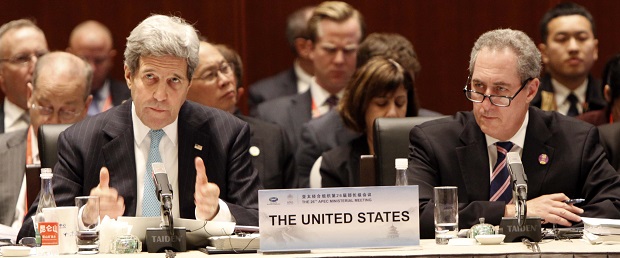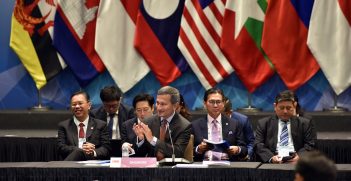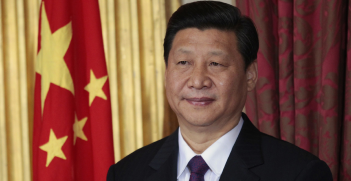TPPing APEC?

The APEC meeting in Beijing today shows the competition between rival free trade areas the Trans Pacific Partnership (TPP) and the proposed Free Trade Agreement for the Asia-Pacific (FTAAP) writes Jayant Menon.
The race is on between the United States and China to dominate the rules-setting game for trade by being the first to be able to announce plans for a free trade area in the Pacific Rim. China hopes to use its position as chair of APEC this year to propose that a feasibility study on a Free Trade Agreement for the Asia-Pacific (FTAAP), first mooted in 2006, be pursued. In other words, negotiations towards an FTAAP would commence, for all practical purposes.
But if the TPP can be concluded, or substantial and credible progress towards its conclusion be achieved, so that an impressive announcement can be made at the APEC meeting in Beijing in November, it would steal the thunder from China. If such an announcement is not forthcoming or not credible, China will likely announce a ‘Beijing Road Map’ for an FTA of the Pacific Rim, building on APEC rather than the TPP. Billions of dollars in trade are at stake.
It will be difficult for leaders from the TPP countries to ignore a declaration endorsing a feasibility study for the FTAAP if they cannot offer an alternative. Reports on whether the US has been able to dissuade China from floating the proposal have been mixed. The United States has succeeded in leaving the door slightly ajar for the TPP to play a future role by blocking reference to a deadline for completion of the FTAAP by 2025. Although deadlines can be missed, as the TPP itself demonstrates, setting one implies it is not just a vision but a plan bounded by a timeframe. The fear is that pursuing the FTAAP could derail the TPP by diluting interest.
But will the FTAAP be any easier to conclude than the TPP? If too much diversity among its members (and therefore in in negotiating positions) is restricting progress in the TPP, then APEC will face an even greater challenge. APEC has more diversity than the TPP since it has an additional nine members.
But the large membership has its positives too. APEC may be the more inclusive choice to build an agreement in the Asia Pacific because unlike the TPP, APEC does not exclude China, and unlike the ASEAN+6 Regional Comprehensive Economic Partnership (RCEP), it does not exclude the United States.
Although its membership is diverse, it currently excludes a few countries in RCEP that may not be fully prepared for the kind of reforms proposed. This includes India, a country that may single-handedly derail the WTO’s Trade Facilitation Agreement, and the newest members of ASEAN — Cambodia, Laos and Myanmar — who are already struggling with implementing the five ASEAN+1 FTAs But engaging countries like Russia and Papua New Guinea brings its own challenges.
APEC’s goals are also not as elusive as the high standards set by the TPP. To some extent, the less ambitious nature of the proposal may offset the constraint imposed by greater diversity in membership.
Given the way that the TPP negotiations have struggled — and based on the information leaked both officially (eg. the Malaysian Trade Minister or Japan’s chief negotiator) and unofficially (eg. WikiLeaks) — it appears that if the TPP is to be concluded anytime soon, it will likely be in a highly compromised form. If so, can it still form the basis of an Pacific Rim agreement? It boils down to a question of credibility, a bit too much of which may have been lost in the eagerness to reach an apparently premature agreement. The improved prospects of President Obama receiving fast-track authority from a Republican-controlled Senate will help but it is unlikely to make a big difference now.
How then do we move forward?
APEC and its Beijing Road Map appears the more likely alternative, assuming that the one report that suggested China has been bullied into junking the proposal is misguided. Although APEC’s achievements since its inception in 1989 may be modest, its approach is generally viewed as being consistent with, if not mutually reinforcing of, the multilateral system and the WTO. This is mainly through its support for non-binding, unilateral actions in implementing its action plans. Although this approach has flexibility as its greatest appeal, the temptation of a free ride needs to be resisted. With this approach, it is all about the carrot — there is no stick.
A Free Trade Agreement for the Asia-Pacific, whether steered by the United States or China, cannot be the end-game, though. It would still mean a world trade system that is fragmented: the TPP, FTAAP or RCEP would merely be the largest of the fragments. Looking further ahead, and short of resurrecting the WTO, unilaterally multilateralising the preferences of the FTAAP and the many other FTAs is the only way to address the growing distortions and fragmentation. In a sense, it would involve moving towards the FTAAP by continuing the process preferred by APEC of joint but non-binding unilateral actions.
Since almost two-thirds of all trade liberalisation has come from unilateral action, this approach offers hope. The political economy suggests that the resistance from FTA partners towards multilateralisation decreases as the number of FTAs increase, due to preference erosion. It is not only the sensible way forward, but a practical one too.
Jayant Menon is Lead Economist at the Office of Regional Economic Integration, Asian Development Bank, and Adjunct Fellow at the Arndt-Corden Department of Economics, The Australian National University. The views expressed in this paper are those of the author and do not necessarily reflect the views and policies of the Asian Development Bank, its Board of Governors or the governments they represent. This piece was originally published in the East Asia Forum. It is republished with permission.





